Abstract:
The ability of engineered biological nanomachines to communicate with biological systems at the molecular level is anticipated to enable future applications such as monit...Show MoreMetadata
Abstract:
The ability of engineered biological nanomachines to communicate with biological systems at the molecular level is anticipated to enable future applications such as monitoring the condition of a human body, regenerating biological tissues and organs, and interfacing artificial devices with neural systems. From the viewpoint of communication theory and engineering, molecular communication is proposed as a new paradigm for engineered biological nanomachines to communicate with the natural biological nanomachines which form a biological system. Distinct from the current telecommunication paradigm, molecular communication uses molecules as the carriers of information; sender biological nanomachines encode information on molecules and release the molecules in the environment, the molecules then propagate in the environment to receiver biological nanomachines, and the receiver biological nanomachines biochemically react with the molecules to decode information. Current molecular communication research is limited to small-scale networks of several biological nanomachines. Key challenges to bridge the gap between current research and practical applications include developing robust and scalable techniques to create a functional network from a large number of biological nanomachines. Developing networking mechanisms and communication protocols is anticipated to introduce new avenues into integrating engineered and natural biological nanomachines into a single networked system. In this paper, we present the state-of-the-art in the area of molecular communication by discussing its architecture, features, applications, design, engineering, and physical modeling. We then discuss challenges and opportunities in developing networking mechanisms and communication protocols to create a network from a large number of bio-nanomachines for future applications.
Published in: IEEE Transactions on NanoBioscience ( Volume: 11, Issue: 2, June 2012)
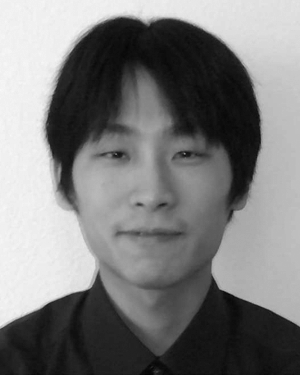
Graduate School of Engineering, Osaka University, Osaka, Japan
Tadashi Nakano (M'05) received the Ph.D. degree in information systems engineering from Osaka University, Japan, in 2002.
He later worked in the Department of Computer Science, Donald Bren School of Information and Computer Sciences, University of California, Irvine, where he was a Postdoctoral Research Scholar from 2002 to 2007 and an Assistant Adjunct Professor from 2007 to 2009. Since 2009, he has been with the Graduate...Show More
Tadashi Nakano (M'05) received the Ph.D. degree in information systems engineering from Osaka University, Japan, in 2002.
He later worked in the Department of Computer Science, Donald Bren School of Information and Computer Sciences, University of California, Irvine, where he was a Postdoctoral Research Scholar from 2002 to 2007 and an Assistant Adjunct Professor from 2007 to 2009. Since 2009, he has been with the Graduate...View more
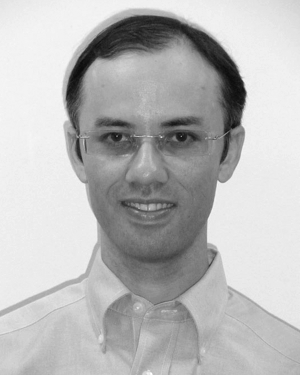
Graduate School of Engineering, Osaka University, Suita, Osaka, Japan
Michael J. Moore (M'09) received the B.S. degree in computer science and biology and the Ph.D. degree in computer science from University of California, Irvine (UCI), in 2000 and 2009, respectively.
He was a Postdoctoral Researcher at UCI from 2009 to 2010. He is currently a Research Scientist at Osaka University, Japan. His research interests are in communication systems in the areas of molecular communication, distribute...Show More
Michael J. Moore (M'09) received the B.S. degree in computer science and biology and the Ph.D. degree in computer science from University of California, Irvine (UCI), in 2000 and 2009, respectively.
He was a Postdoctoral Researcher at UCI from 2009 to 2010. He is currently a Research Scientist at Osaka University, Japan. His research interests are in communication systems in the areas of molecular communication, distribute...View more
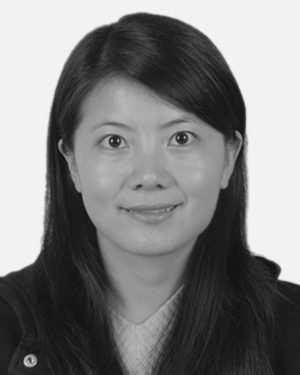
Department of Physics, Institute of Theoretical Physics and Astrophysics, Xiamen University, Fujian, China
Fang Wei received the B.S. degree in physics from Tangshan Normal University, Tangshan, China, in 2006 and the M.S. degree in physics from Xiamen University, Xiamen, China in 2009. Currently, she is working toward the Ph.D. degree at Xiamen University and is a research scholar at Ohio University.
Her research interest is in the biophysical simulation of calcium signal and molecular dynamics.
Fang Wei received the B.S. degree in physics from Tangshan Normal University, Tangshan, China, in 2006 and the M.S. degree in physics from Xiamen University, Xiamen, China in 2009. Currently, she is working toward the Ph.D. degree at Xiamen University and is a research scholar at Ohio University.
Her research interest is in the biophysical simulation of calcium signal and molecular dynamics.View more
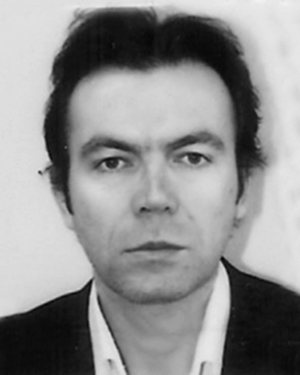
Department of Computer and Telecommunications, Engineering, University of Western Macedonia, Macedonia, Greece
Athanasios V. Vasilakos (M'00–SM'11) received the Ph.D. degree in computer engineering from University of Patras, Greece, in 1988.
He is currently Professor at the University of Western Macedonia, Greece. He has authored or coauthored over 200 technical papers in major international journals and conferences. He is author/coauthor of five books and 20 book chapters in the areas of communications.
Prof. Vasilakos has served a...Show More
Athanasios V. Vasilakos (M'00–SM'11) received the Ph.D. degree in computer engineering from University of Patras, Greece, in 1988.
He is currently Professor at the University of Western Macedonia, Greece. He has authored or coauthored over 200 technical papers in major international journals and conferences. He is author/coauthor of five books and 20 book chapters in the areas of communications.
Prof. Vasilakos has served a...View more
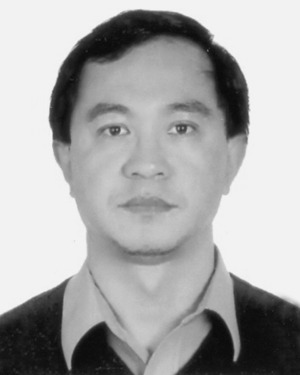
Department of Physics, Institute of Theoretical Physics and Astrophysics, Xiamen University, Fujian, China
Jianwei Shuai received the B.E., M.E., and Ph.D. degrees in physics from Xiamen University, Xiamen, China in 1989, 1992, and 1995, respectively.
From 1995 to 2007, he worked in Department of Physics at Xiamen University, Department of Electronic Engineering at City University of Hong Kong, Department of Applied Physics and Chemistry at University of Electro-Communications in Tokyo, Department of Biomedical Engineering at C...Show More
Jianwei Shuai received the B.E., M.E., and Ph.D. degrees in physics from Xiamen University, Xiamen, China in 1989, 1992, and 1995, respectively.
From 1995 to 2007, he worked in Department of Physics at Xiamen University, Department of Electronic Engineering at City University of Hong Kong, Department of Applied Physics and Chemistry at University of Electro-Communications in Tokyo, Department of Biomedical Engineering at C...View more

Graduate School of Engineering, Osaka University, Osaka, Japan
Tadashi Nakano (M'05) received the Ph.D. degree in information systems engineering from Osaka University, Japan, in 2002.
He later worked in the Department of Computer Science, Donald Bren School of Information and Computer Sciences, University of California, Irvine, where he was a Postdoctoral Research Scholar from 2002 to 2007 and an Assistant Adjunct Professor from 2007 to 2009. Since 2009, he has been with the Graduate School of Engineering, Osaka University, where he is currently an Associate Professor. His research interests are in the areas of network applications and distributed computing systems with particular emphasis on interdisciplinary approaches. His current research is focused on biological-ICT, including the design, implementation, and evaluation of biologically inspired systems and synthetic biological systems.
Tadashi Nakano (M'05) received the Ph.D. degree in information systems engineering from Osaka University, Japan, in 2002.
He later worked in the Department of Computer Science, Donald Bren School of Information and Computer Sciences, University of California, Irvine, where he was a Postdoctoral Research Scholar from 2002 to 2007 and an Assistant Adjunct Professor from 2007 to 2009. Since 2009, he has been with the Graduate School of Engineering, Osaka University, where he is currently an Associate Professor. His research interests are in the areas of network applications and distributed computing systems with particular emphasis on interdisciplinary approaches. His current research is focused on biological-ICT, including the design, implementation, and evaluation of biologically inspired systems and synthetic biological systems.View more

Graduate School of Engineering, Osaka University, Suita, Osaka, Japan
Michael J. Moore (M'09) received the B.S. degree in computer science and biology and the Ph.D. degree in computer science from University of California, Irvine (UCI), in 2000 and 2009, respectively.
He was a Postdoctoral Researcher at UCI from 2009 to 2010. He is currently a Research Scientist at Osaka University, Japan. His research interests are in communication systems in the areas of molecular communication, distributed computer networks, and social networks.
Michael J. Moore (M'09) received the B.S. degree in computer science and biology and the Ph.D. degree in computer science from University of California, Irvine (UCI), in 2000 and 2009, respectively.
He was a Postdoctoral Researcher at UCI from 2009 to 2010. He is currently a Research Scientist at Osaka University, Japan. His research interests are in communication systems in the areas of molecular communication, distributed computer networks, and social networks.View more

Department of Physics, Institute of Theoretical Physics and Astrophysics, Xiamen University, Fujian, China
Fang Wei received the B.S. degree in physics from Tangshan Normal University, Tangshan, China, in 2006 and the M.S. degree in physics from Xiamen University, Xiamen, China in 2009. Currently, she is working toward the Ph.D. degree at Xiamen University and is a research scholar at Ohio University.
Her research interest is in the biophysical simulation of calcium signal and molecular dynamics.
Fang Wei received the B.S. degree in physics from Tangshan Normal University, Tangshan, China, in 2006 and the M.S. degree in physics from Xiamen University, Xiamen, China in 2009. Currently, she is working toward the Ph.D. degree at Xiamen University and is a research scholar at Ohio University.
Her research interest is in the biophysical simulation of calcium signal and molecular dynamics.View more

Department of Computer and Telecommunications, Engineering, University of Western Macedonia, Macedonia, Greece
Athanasios V. Vasilakos (M'00–SM'11) received the Ph.D. degree in computer engineering from University of Patras, Greece, in 1988.
He is currently Professor at the University of Western Macedonia, Greece. He has authored or coauthored over 200 technical papers in major international journals and conferences. He is author/coauthor of five books and 20 book chapters in the areas of communications.
Prof. Vasilakos has served as General Chair, Technical Program Committee Chair for many international conferences. He served or is serving as an Editor for many technical journals, such as the IEEE Transactions on Network and Service Management, IEEE Transactions on Systems, Man, and Cybernetics—Part B: Cybernetics, IEEETransactions on Information Technology in Biomedicine, ACMTransactions on Autonomous and Adaptive Services, and the IEEE Journal on Selected Areas in Communications special issues of May 2009, January 2011, and March 2011. He is the founding Editor-in-Chief of theInternational Journal of Adaptive and Autonomous Communications Systems (IJAACS) and theInternational Journal of Arts and Technology (IJART). He is General Chair of the Council of Computing of the European Alliances for Innovation.
Athanasios V. Vasilakos (M'00–SM'11) received the Ph.D. degree in computer engineering from University of Patras, Greece, in 1988.
He is currently Professor at the University of Western Macedonia, Greece. He has authored or coauthored over 200 technical papers in major international journals and conferences. He is author/coauthor of five books and 20 book chapters in the areas of communications.
Prof. Vasilakos has served as General Chair, Technical Program Committee Chair for many international conferences. He served or is serving as an Editor for many technical journals, such as the IEEE Transactions on Network and Service Management, IEEE Transactions on Systems, Man, and Cybernetics—Part B: Cybernetics, IEEETransactions on Information Technology in Biomedicine, ACMTransactions on Autonomous and Adaptive Services, and the IEEE Journal on Selected Areas in Communications special issues of May 2009, January 2011, and March 2011. He is the founding Editor-in-Chief of theInternational Journal of Adaptive and Autonomous Communications Systems (IJAACS) and theInternational Journal of Arts and Technology (IJART). He is General Chair of the Council of Computing of the European Alliances for Innovation.View more

Department of Physics, Institute of Theoretical Physics and Astrophysics, Xiamen University, Fujian, China
Jianwei Shuai received the B.E., M.E., and Ph.D. degrees in physics from Xiamen University, Xiamen, China in 1989, 1992, and 1995, respectively.
From 1995 to 2007, he worked in Department of Physics at Xiamen University, Department of Electronic Engineering at City University of Hong Kong, Department of Applied Physics and Chemistry at University of Electro-Communications in Tokyo, Department of Biomedical Engineering at Case Western Reserve University in Ohio, Department of Physics and Astronomy at Ohio University, and Department of Neurobiology and Behavior at University of California, Irvine, as Research Associate and Assistant Project Scientist, respectively. Currently he is a Professor in the Department of Physics, Xiamen University. His research interests are in the areas of biophysical simulation, including calcium signal, neural networks, protein dynamics, immune dynamics, and cellular signal networks.
Jianwei Shuai received the B.E., M.E., and Ph.D. degrees in physics from Xiamen University, Xiamen, China in 1989, 1992, and 1995, respectively.
From 1995 to 2007, he worked in Department of Physics at Xiamen University, Department of Electronic Engineering at City University of Hong Kong, Department of Applied Physics and Chemistry at University of Electro-Communications in Tokyo, Department of Biomedical Engineering at Case Western Reserve University in Ohio, Department of Physics and Astronomy at Ohio University, and Department of Neurobiology and Behavior at University of California, Irvine, as Research Associate and Assistant Project Scientist, respectively. Currently he is a Professor in the Department of Physics, Xiamen University. His research interests are in the areas of biophysical simulation, including calcium signal, neural networks, protein dynamics, immune dynamics, and cellular signal networks.View more


